
Steamboat People, page 3
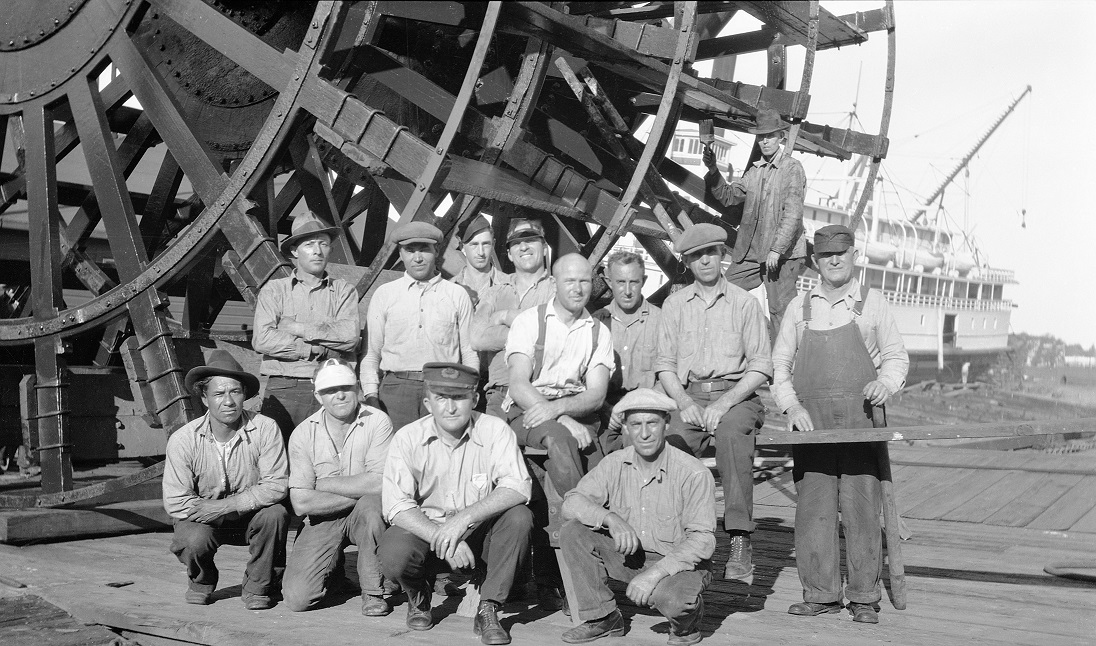
crew of the J.D. PETERS taken in October 1930
The crew of the sternwheel Sacramento steamboat J.D. PETERS (which was built in 1889) taken in October 1930 at a shipyard very likely located on San Francisco Bay.
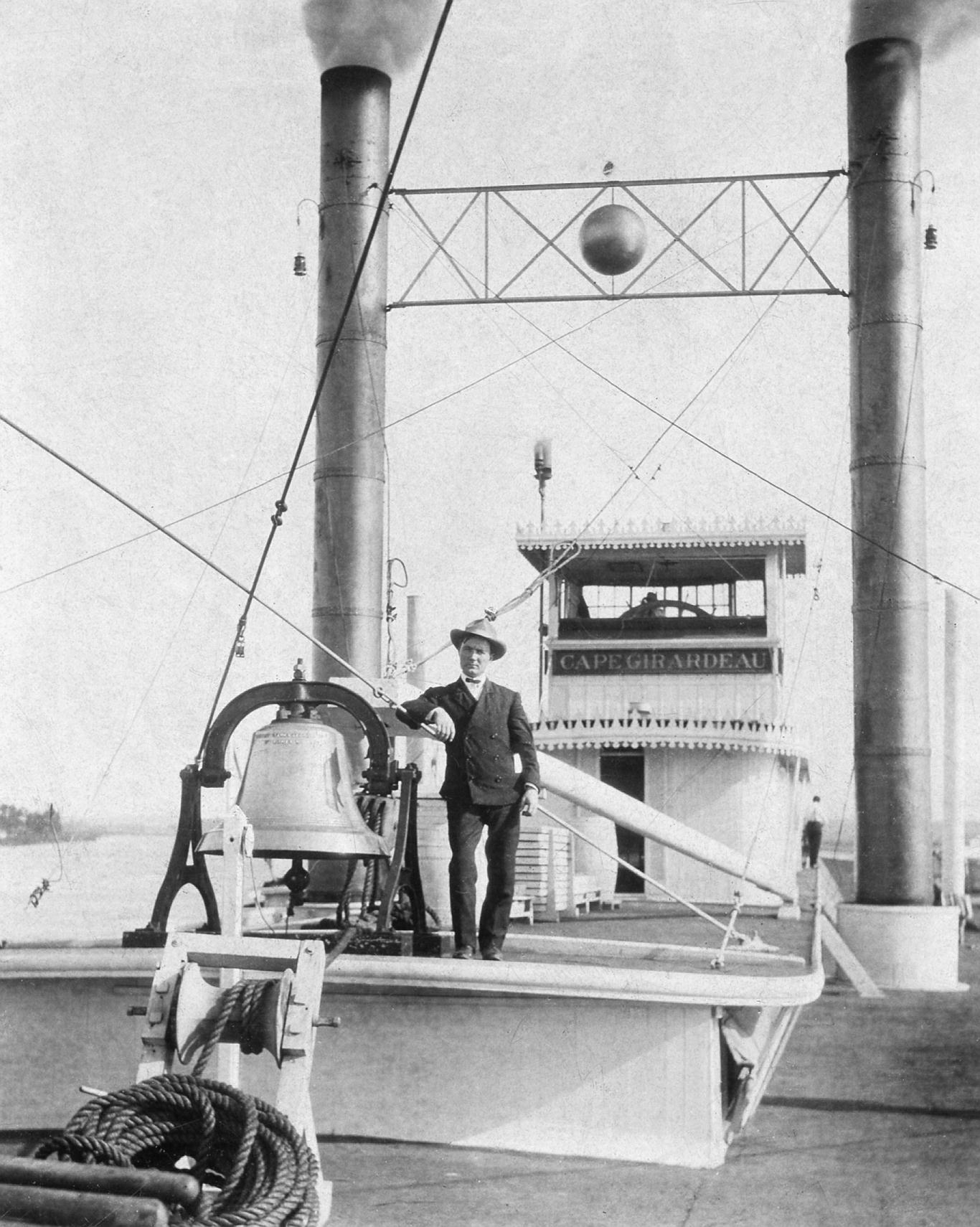
Attached lucky find on eBay . . . unidentified man standing next to the bell - an original "cabinet card" photo of the CAPE GIRARDEAU 3.70 x 4.60 inches. The focus is a bit soft on the pilot house but the bell and stacks are sharp.
Cape Girardeau (Packet, 1901-1910)
Ran on the Mississippi River
Way's Packet Directory Number 0827:
Built at Madison, Indiana 1851, as War Eagle; rebuilt at the Carondelet ways, St. Louis, Missouri 1901 and renamed Cape Girardeau.
She had red-painted smokestacks and was known as the "Red Stack Cape."
Owned by the Eagle Packet Company, she ran regularly in the St. Louis-Cape-Commerce trade, Captain Willam H. "Buck" Leyhe master.
She sank while en route from Commerce to St. Louis, Missouri, after hitting a hidden obstruction and was lost at Turkey Island 50 miles above St. Louis, Missouri July 11, 1910.
The total loss of cargo was estimated at $60,000; no insurance.
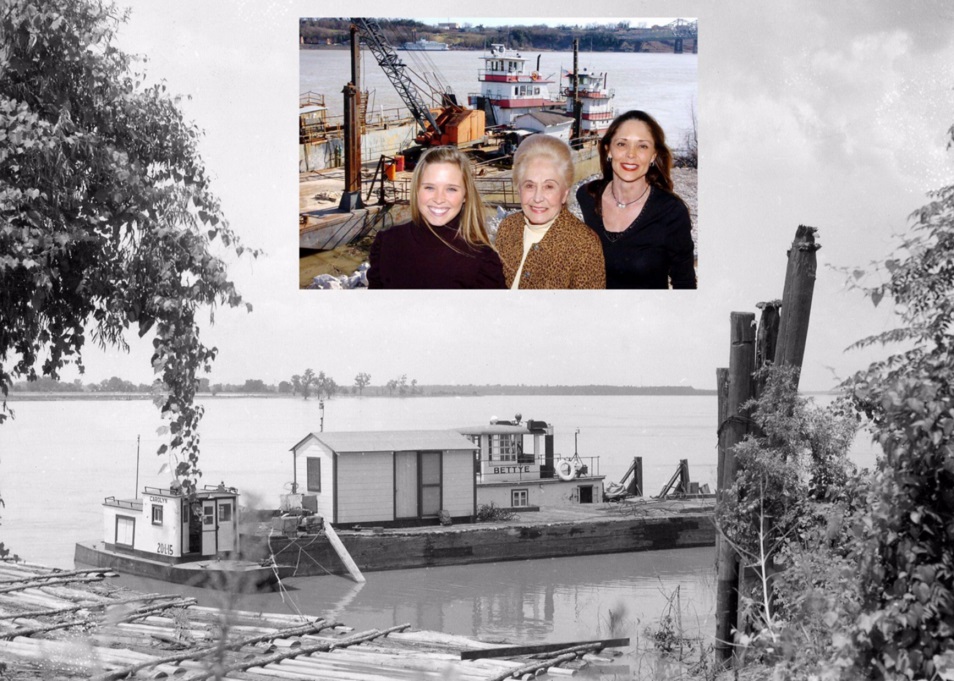
Towboat Bettye and her people
Back in March of 2011 I acquired the attached photo on eBay and handwritten on the back was "taken near Natchez, MISS."
At first I thought the little towboat was called the BETTY. E, then realized there was no period between the last two letters.
Googling Natchez and Bettye took me to the article below from the end of 2010 in the Natchez paper.
The following day I called the office of Vidalia Dock and Storage where the grand daughter Sarah Wisner answered the phone. I described the photo to her and told her that if she, her mother and grandmother would like to see the picture that I'd e-mail it to her. She gave me her e-mail address and her mother's.
Grandma Bettye (whose maiden name was McGehee I discovered on Elodie Pritchartt's Natchez blog) told her daughter Carla what she remembered about the boat and Carla called me.
Bettye's father had a plant that made boxes in Natchez and he bought the little towboat, evidently in part to help in handling barges upon which his boxes were sometimes shipped if they weren't be transported by train. Papa named the BETTYE after his daughter. She remembered especially being in the car with her Papa when they were driving down to the river where the boat that was named after her was visible to them. This was June 14, 1940 and news came on the car radio that Paris had fallen to the Nazis. Carla was surprised to hear this story which her Mother had never told her before. By doing the math on how old Carla said her mother was in 2011, she would have been 14 in 1940. Bettye told Carla that the photo would date sometime between the middle of the 1930's to the middle of the 1940's since her father sold the boat after 1945.
I thought the spelling of Bettye was unusual but from what I've found online so far it's a fairly common spelling in the South.
I superimposed the photo from the Natchez paper of the three generations, Sarah the grand daughter, Bettye the grandmother and her daughter Carla who is Sarah's mother. The focus on the photo of the ladies carries all the way to Natchez on the opposite shore where you can see the casino boat at Natchez-Under-the-Hill, which was designed to look like be a big old fashioned sidewheeler.
Three generations lead Vidalia Dock and Storage
By Jennifer Edwards
The Natchez Democrat
natchezdemocrat.com
Sunday, January 31, 2010
NATCHEZ - Bettye Jenkins, Carla Jenkins and Sarah Wisner share more than genes.
The three generations of ladies also share a bond with the Mississippi River that they all said has their blood laced with the muddy water of the Mississippi.
The ladies are the driving forces behind operations at Vidalia Dock and Storage and Two J Ranch in Vidalia.
Bettye Jenkins, the matriarch of the group, began Vidalia Dock and Storage in 1956 with her husband. Her daughter, Carla, followed "as soon as she was old enough," and Wisner, Carla's daughter, joined the team following her May 2009 graduation from Mississippi State University.
The trio handles the day-to-day operations of both businesses.
"You never know what you are going to come in and find on your desk," Wisner said. "You could come in and have to start weighing trucks or jump on the loader or do dispatch for boats coming in.
"It's never boring."
It is that "never still for long" kind of work that has its hooks in the ladies, Bettye Jenkins said.
"Working on the river, that's just what we have always done," she said. "The work and the river has always been exciting for us."
For Carla Jenkins, the river hooked her at an early age.
"From the time I was old enough to get in the car and come to work with my dad, that is all I wanted to do," Carla Jenkins said. "I've always known this is what I wanted to do. "It gets in your blood and you really can't get it out."
Vidalia Dock and Storage provides tug services for area river facilities, services grain elevators and also has boats that work up and down the river. Two J Ranch sells limestone rocks for construction and landscaping projects of all sizes.
"We are family businesses," Bettye Jenkins said. "We treat everyone like family."
Wisner said after graduating college she thought she'd find a job outside of Vidalia or Natchez, but the pull of the river was just too strong.
During high school and college, Wisner would work holidays and summer vacations at the business, but never thought of making it a permanent job. After her May graduation, she wanted to come back to the family business "just for the summer," she said.
But after a few months of working fulltime, Wisner said she could never think of working anywhere else.
"After being here for a few months, I didn't want to leave," she said. "I enjoyed the work too much and being here with family just made it better."
Carla Jenkins said she learned the business from her parents and now having the chance to pass along the knowledge to her daughter "is a blessing."
"Of all my three children, she is the one I least expected to come back and work on the river with us," she said. "But you can tell it is in her now. She loves it and we love having her here."
Wisner handles a good bit of the office work including billing, collections and safety management, but she said her job isn't at all confined to her desk.
"We all have to learn to do everything, because you have to pick up for someone if they aren't around," she said. "You can't just say 'I don't know how to do that'
"In our business, since there are just a few of us, you have to know how to do it all."
Wisner learned to do much of her daily work, by shadowing her grandmother.
"She's 83, works fulltime and is as sharp as a tack," Wisner said. "I'm glad I can take some of her work load off of her, but she'll still work every day."
Jenkins said retirement or even working part time isn't in her plans anytime soon.
"There is only so much bridge you can play," she said. "I still enjoy the work and can still do it, so I see no reason to stop now."
The ladies of Vidalia, Louisiana's Dock & Storage Company on the Mississippi River
Elodie Pritchartt of Natchez, Mississippi just notified me of the following from THE NATCHEZ DEMOCRAT 15 November 2017 which you can add as a "tag" after the article on The Vidalia Dock & Storage Company:
Bettye Jenkins was honored as Natchez Woman of the Year!!!!
We Love You Mrs. Bettye Last evening at the Natchez Chamber of Commerce Gala, our very own Mrs. Bettye Jenkins was honored as Natchez Woman of the Year!!!!
We are so blessed to have her as not only a member, but Past President, PGC Board of Directors, Homeowner and Treasurer for the past many years!!
Mrs. Bettye is a wonderful example of Southern Charm, Grace and a True Steel Magnolia!!
Thank You for ALL You Do for the Pilgrimage Garden Club!!
We love you!! Genny
Pilgrimage Garden Club
410 N Commerce
Natchez, MS 39120
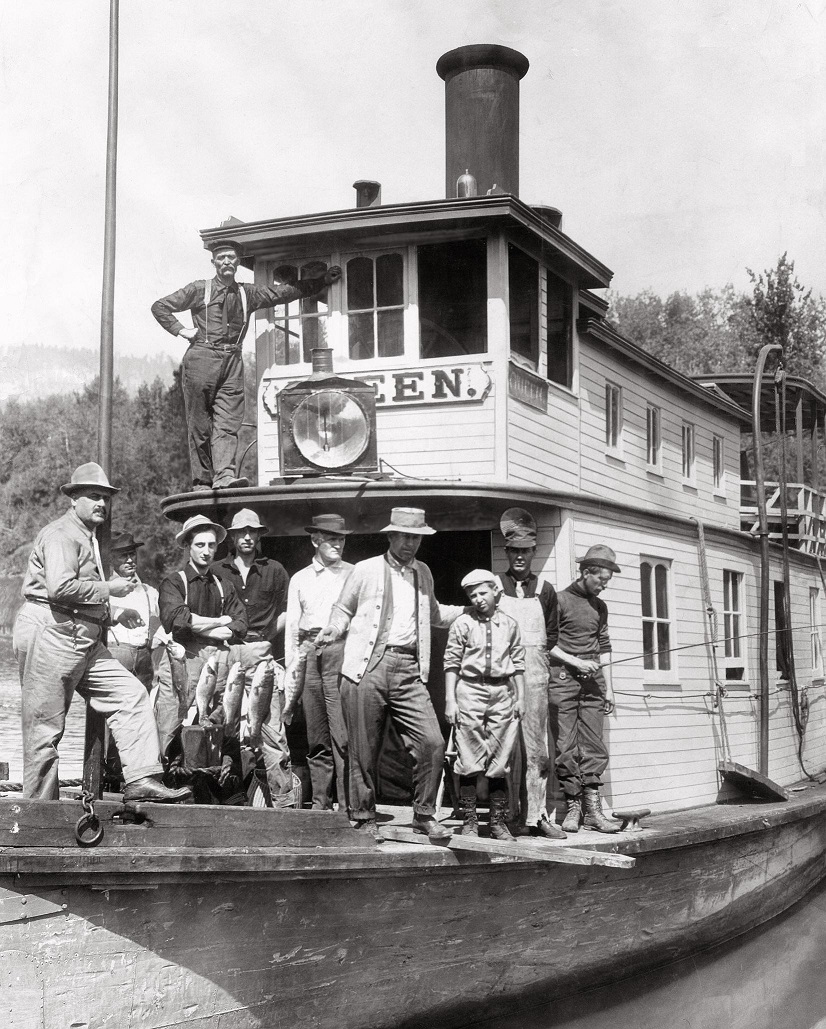
Aboard the steamer QUEEN on the St. Joe River in Idaho
Attached is a scan I made from a sharp focus 11 x 14 glossy print. Someone had done some heavy-handed retouching directly on it, outlining with a paint brush the 9 men and a boy in the picture. I subdued the retouching in Photoshop which was time consuming but rewarding as far as I was able to take it.
Lewis Verduyn in New Zealand did some research and is pretty confident that the fish that the anglers were showing off were bass, not trout (who are more "sleek) according to him.
So, in conclusion, I changed the identification of the fish from trout to bass in the caption below:
The QUEEN was built by J. Herbert Lyon.
It could move five carloads of freight at once, with a barge lashed on to each side while pushing another barge ahead.
Written on the back of the print:
"Captain C.A. Waters in front of the pilot house Red Collar Line St. Joe run C & A"
On deck are 8 men, a boy and 5 bass.
EXCERPTED FROM WIKIPEDIA:
Steam navigation on Lake Coeur d'Alene in Kootenai County, Idaho lasted from the 1880s to the 1930s. More steamboats operated on Lake Coeur d'Alene than on any other lake west of the Great Lakes. The high point of steam navigation was probably from 1908 to 1913. After that railroads, and increasingly automobile and truck traffic on newly built highways supplanted steam navigation, although some vessels continued to be operated unit the mid-1930s.
In September 1908, the Red Collar steamship line operated seven steamers on Lake Coeur d'Alene, which was 27 miles, running mainly in a north-south direction.The main city on the lake was Coeur d'Alene, at the northern, downstream end. By 1908 the city of Coeur d'Alene was connected by steam and electric rail lines to Spokane, Washington, about 30 miles to the west. The lake varied from 50 to 400 feet deep, and with the adjacent navigable St. Joe River, formed a natural water route just over 60 miles long.
The St. Joe River:
At the far southern end of the lake, flowing in from an easterly direction, was the St. Joe River, which was navigable for some distance. The St. Joe river was about 2,100 feet elevation above sea level, and it was claimed that it was the highest navigable river in the world.
The St. Joe river valley was about two miles wide where the river flowed into the lake, narrowing to about one-quarter mile at the head of navigation. Within the valley, the river itself was reported to be at least 150 feet wide and 20 feet deep.
Points on the river included Ramsdell, Hell's Gulch, Cosmos, St. Maries, Ducommon, St. Joe City, and Ferrell, or Ferrell's, generally considered the head of navigation on the St. Joe. However, in 1896, the steamer ELK, under the command of Captain Reynolds, was able to reach Cottonwood Island, twelve miles upriver from Ferrell's.
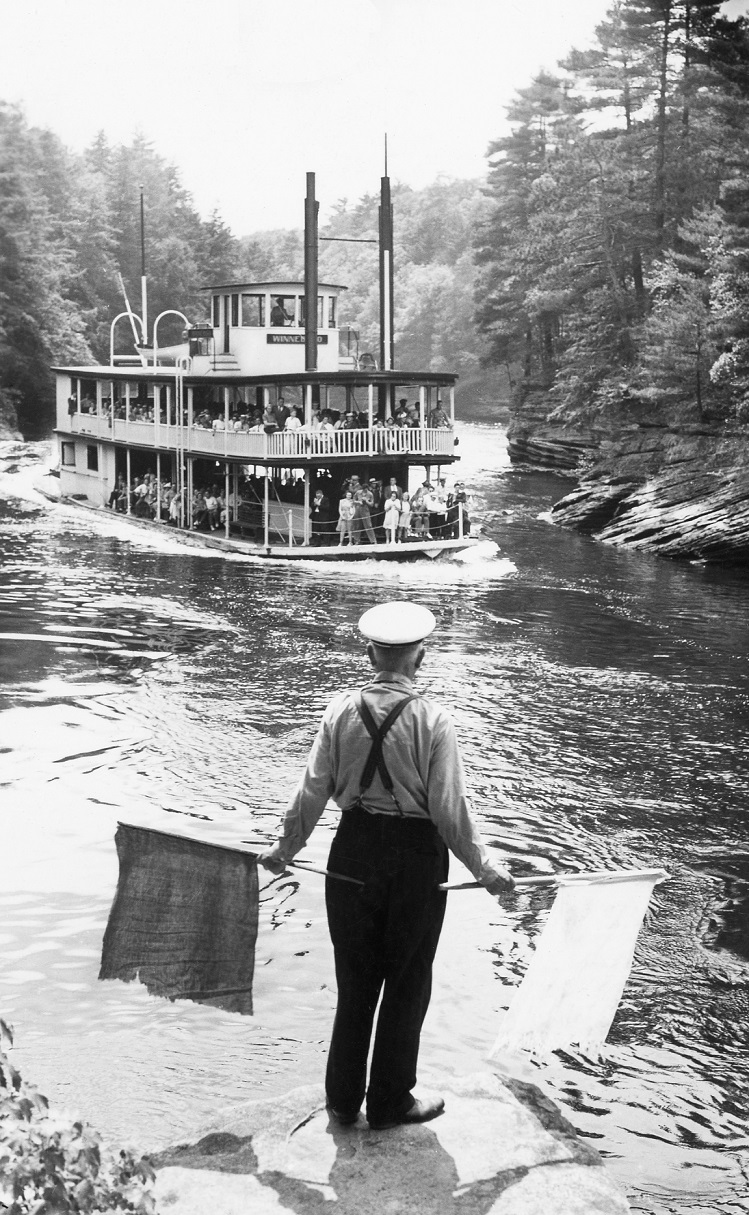
22 August 1959 steamboat WINNEBAGO Wisconsin Dells
Nice image taken 22 August 1959 of a senior crew member in the foreground holding semaphore flags in order to signal to the pilot of the excursion steamboat WINNEBAGO, full of passengers as it gave a tour of the Wisconsin Dells in central Wisconsin.
wikipedia explanation:
Flag semaphore (from the Greek σῆμα, sema, meaning sign and φέρω, phero, meaning to bear; altogether the sign-bearer) is the telegraphy system conveying information at a distance by means of visual signals with hand-held flags, rods, disks, paddles, or occasionally bare or gloved hands. Information is encoded by the position of the flags; it is read when the flag is in a fixed position. Semaphores were adopted and widely used (with hand-held flags replacing the mechanical arms of shutter semaphores) in the maritime world in the 19th century. It is still used during underway replenishment at sea and is acceptable for emergency communication in daylight or using lighted wands instead of flags, at night.
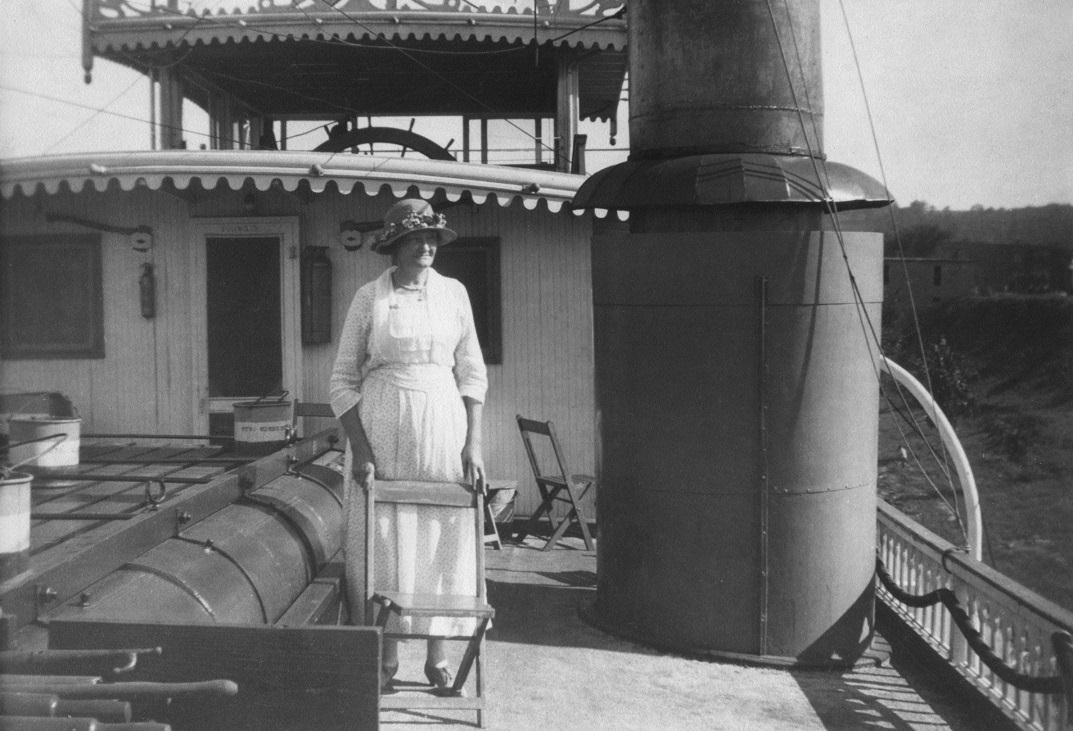
Aboard the steamer WASHINGTON
This 6 1/2 x 9 1/2 print of an unknown lady standing in front of the texas cabin with the pilot house above and the portside stack on the right was rubber stamped 27 November, 1936.
The boat's name was readable on the side of the bucket in front of the screen door to the texas cabin.
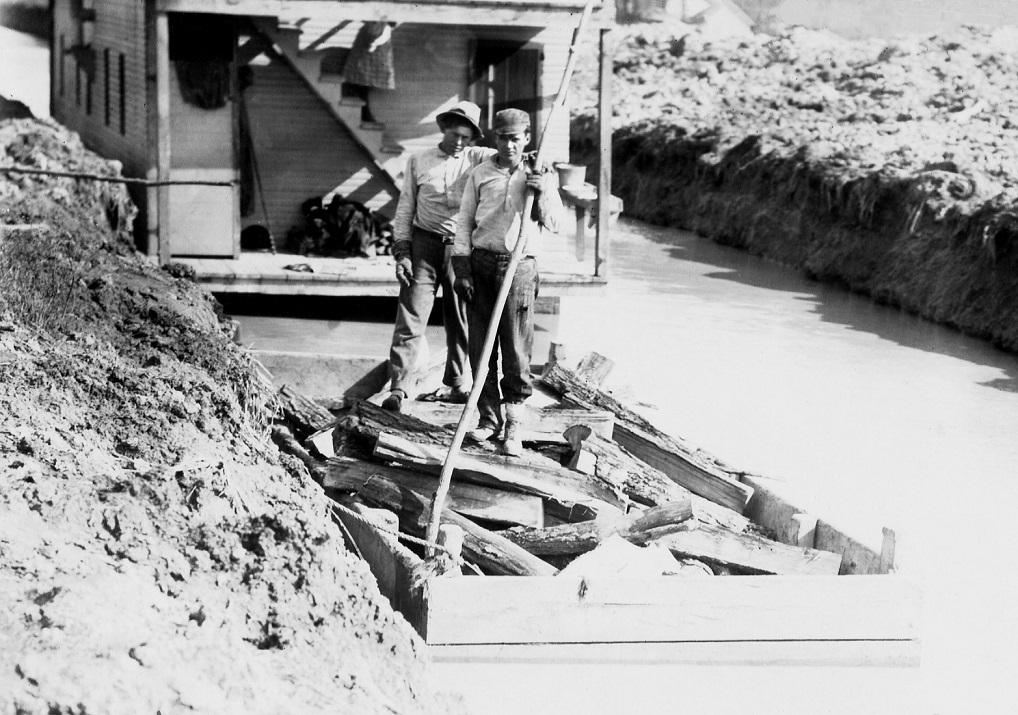
Quarter Boat, small barge filled with fire wood (?) in a narrow card in the vicinity of St. Louis, MO
The attached unusual real photo post card is of two working men standing in a small barge which is full of what could have been firewood to feed the furnace under the boilers on a steamboat. Behind the men on the mini-barge can be seen the main deck of what must have been a two story "Quarter Boat" where crew members had their meals and slept on beds or bunks. The body of water the barge and Quarter Boat are floating in is narrow so it was probably a canal and on the back of the card is written St. Louis, MO. Historians of the city might offer some theories as to where this canal was located.
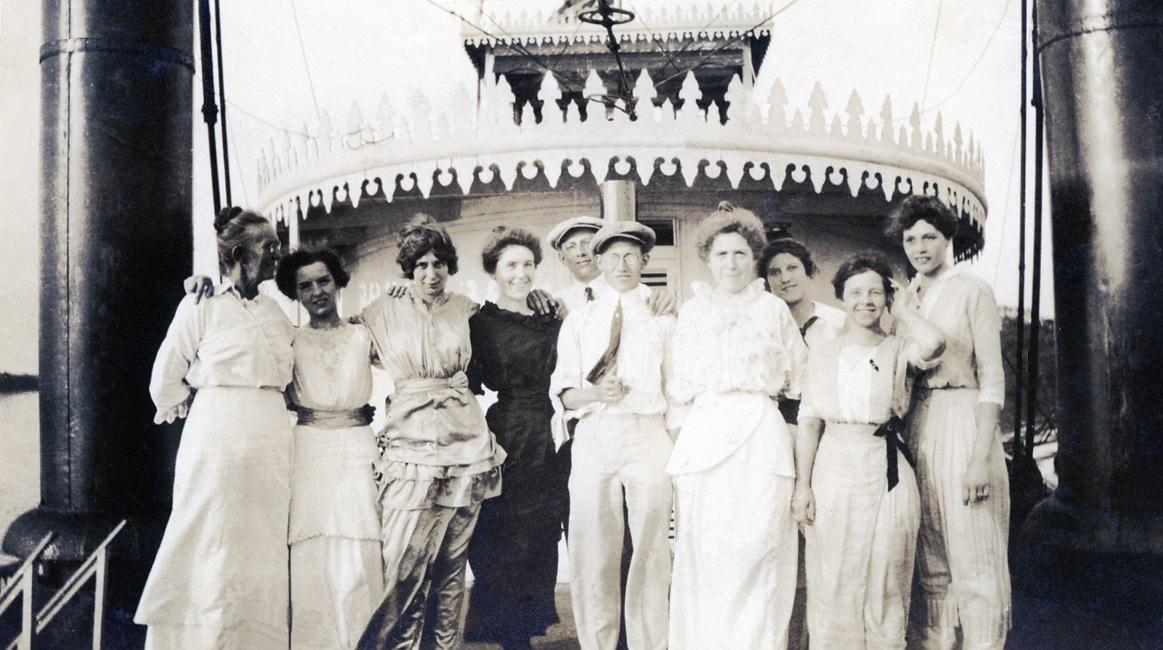
Snapshot of 8 ladies, 2 gents aboard an unknown steamer
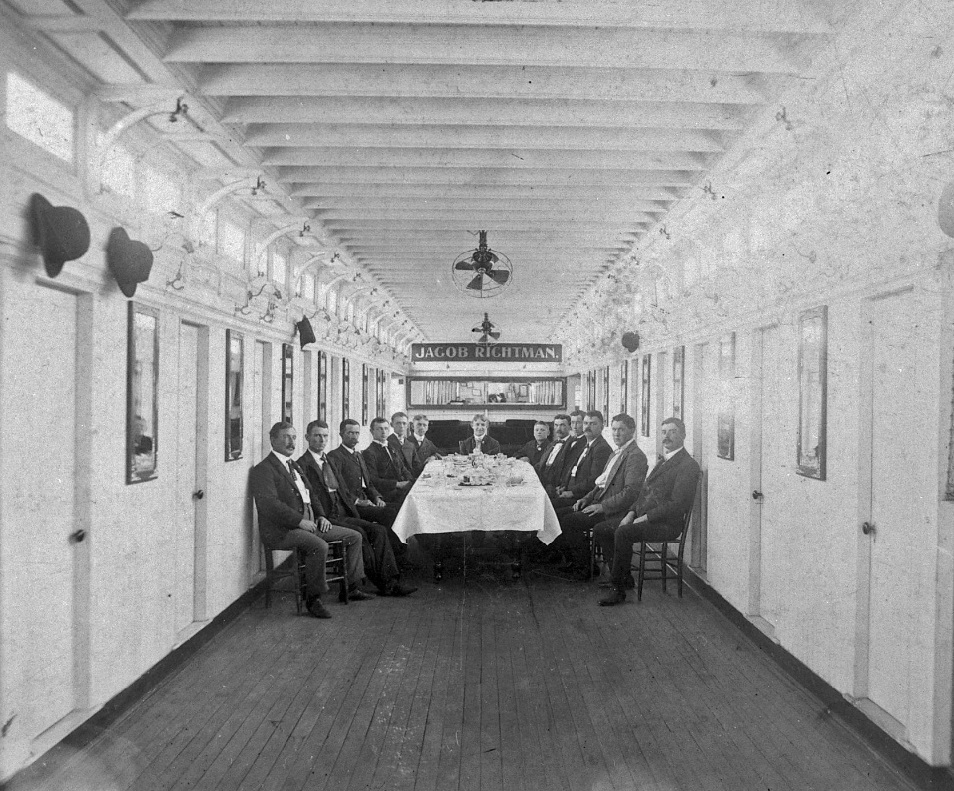
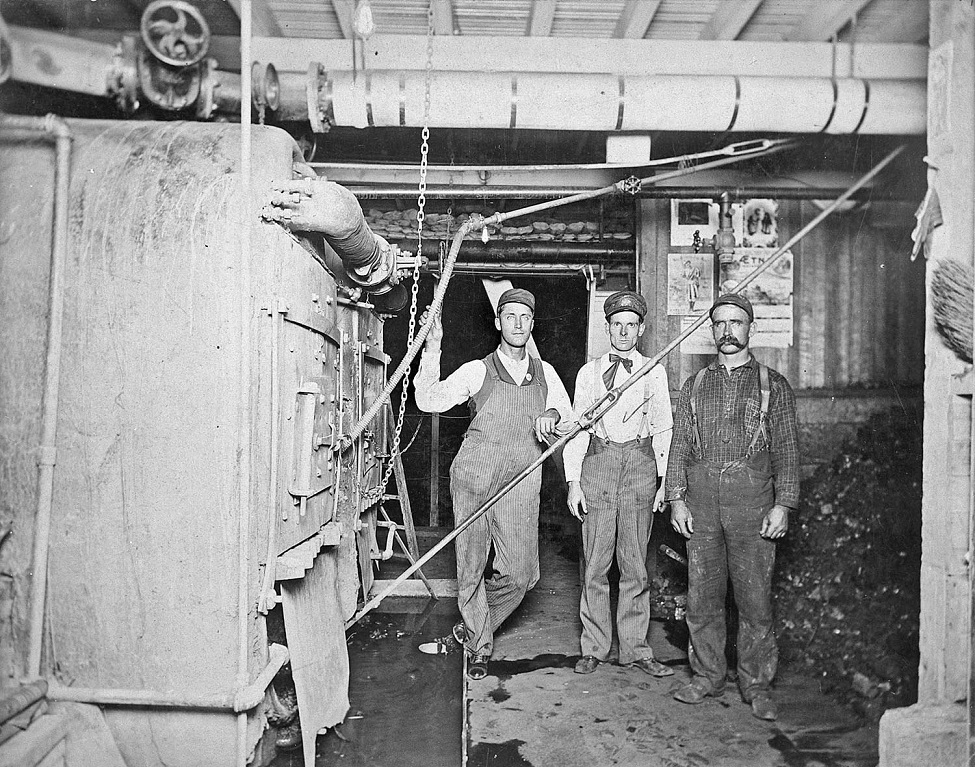
Excursion steamer JACOB RICHTMAN photos of the cabin and the boilers
Photos from La Crosse of the cabin aboard the JACOB RICHTMAN
First: 10 gents plus 2 boys seated around the dining table
Second: Next to the boilers on the RICHTMAN stands the Engineer between two crewmen.
JACOB RICHTMAN
Sternwheel Excursion boat
Way's Packet Directory Number 2913
Built in 1898 at Sterling Island, Illinois
Owned by these 4 members of the Richtman family:
Captains Jacob Senior & Junior and also James and Simon.
Sold to Missouri River and renamed UNCLE SAM in 1904.

With the exception of images credited to public institutions,
everything on this page is from a private collection.
Please contact Steamboats.com for permission for commercial use.*
All captions provided by Dave Thomson, Steamboats.com primary contributor and historian.
